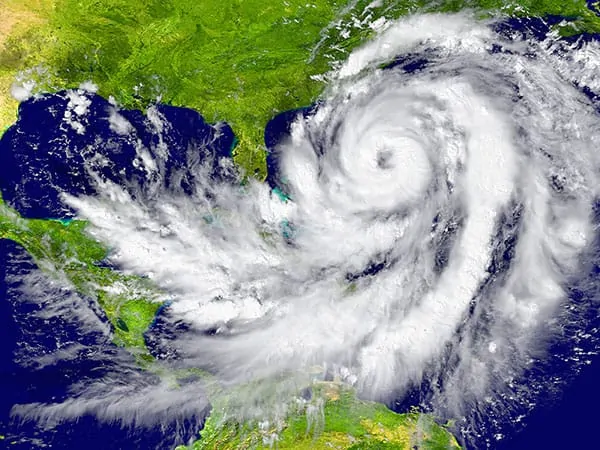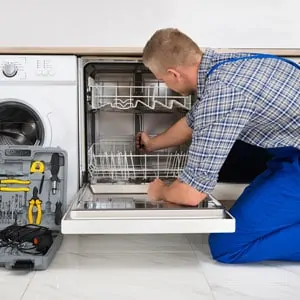Hurricanes and tropical storms are unpredictable beasts. They can intensify and change directions without notice, making storm preparation vital for minimizing hurricane damage. Experts can only predict how many hurricanes will make landfall in the U.S. each year based on historical data and current weather patterns. Meteorologists use the Saffir-Simpson Hurricane Wind Scale to indicate a storm’s strength. They use data regarding air pressure, water temperatures, air temperatures, winds and other variables to predict where a storm might travel and how strong it could become. By understanding the hurricane category ratings, you can have a better idea about the impact that a storm could have on your commercial property.

Hurricane Category Ratings
Category 1
Sustained wind speeds: 74 to 95 miles per hour
Storm surge: 4 to 5 feet above normal
A Category 1 hurricane is a dangerous storm that is likely to cause some damage to roofs, gutters and siding. Winds could topple trees and snap tree branches. Winds could also affect power lines and poles, resulting in power outages.
If debris breaks a window or a commercial building, the contents inside might receive water damage from rain intrusions. It is a good idea to keep vital documents in a strong, waterproof storage containers or filing cabinets to minimize damage.
Buildings on or near bodies of water are at risk of flooding due to storm surges, which is when waters rise abnormally because of a storm. The severity of a surge depends on the tides, air pressure, rainfall, the position of the Earth in its rotation, and winds. Storm surges can occur with any type of storm, not just hurricanes or tropical storms. In some instances, storm surges can cause more damage than hurricanes.
A building at sea level that experiences a storm surge during a Category 1 hurricane could experience flooding in the basement and ground floor level.
Category 2
Sustained wind speeds: 96 to 110 miles per hour
Storm surge: 6 to 8 feet above normal
Category 2 hurricanes have dangerously strong winds that cause extensive damage. Well-constructed commercial buildings might experience major siding and roof damage. Fallen trees and branches will likely block roads. Affected cities may experience power outages that last days or weeks.
Storm surges caused by Category 2 hurricanes can cause significant water damage to sub- and ground floor levels.
Category 3
Sustained wind speeds: 111 to 130 miles per hour
Storm surge: 9 to 12 feet above normal
Category 3 hurricanes are “major” hurricanes that cause devastating damage. Hurricane Katrina was a Category 3 storm when it made landfall in 2005. It progressed to a Category 5 storm within nine hours while it was in the Gulf of Mexico, but devolved into a Category 3 when it made landfall a second time.
A Category 3 hurricane can blow the roof off buildings. The winds will uproot strong trees or cause them to snap. Affected areas will experience near-total power losses that could last days or weeks.
Water from storm surges can infiltrate buildings that are seemingly far from the shore in a Category 3 hurricane. Floodwaters can infiltrate a building’s first and second stories, causing overwhelming water damage. Hundreds of people lost their lives and businesses received major hits during Hurricane Katrina because of the subsequent floods.
Category 4
Sustained wind speeds: 130 to 156 miles per hour
Storm surge: 13 to 18 feet above normal
Category 4 hurricanes, like Hurricane Opal in 1995, will cause total roof failure on many buildings. Buildings may also experience catastrophic structural damage. Water shortages and power outages can last weeks or months. The area will likely be uninhabitable for just as long.
Storm surges will cause devastating water damage to affected buildings that will likely require rebuilding. It is a good idea to move all vital documents to a secure area off-site, as you might not be able to access the building to salvage the items in a timely manner.
Category 5
Sustained wind speeds: 157 miles per hour and higher
Storm surge: Greater than 18 feet above normal
In a Category 5 hurricane, like Hurricane Rita in 2005, many commercial properties will experience complete roof failures; some will experience complete building failures. The strong winds may blow away smaller utility buildings. Buildings in an affected area will be uninhabitable for weeks or months.
Storm surge waters are likely to infiltrate several floors in a multi-story building.
Hurricanes and tropical storms cause overwhelming, unthinkable damage. With the right disaster preparedness planning, the damage does not have to be unexpected and the recovery process does not have to be as prolonged. Because storms hit at all times of the day, Polygon’s teams of experts are standing by with emergency drying equipment to minimize water and mold damage in buildings. When storm waters affect documents, crews take immediate action to salvage, clean, dry and restore them so your business can resume operations as fast as possible. Whether you’re in the process of creating a disaster recovery plan or you need immediate document restoration services, Polygon will be at your side. Contact us today to learn more.



